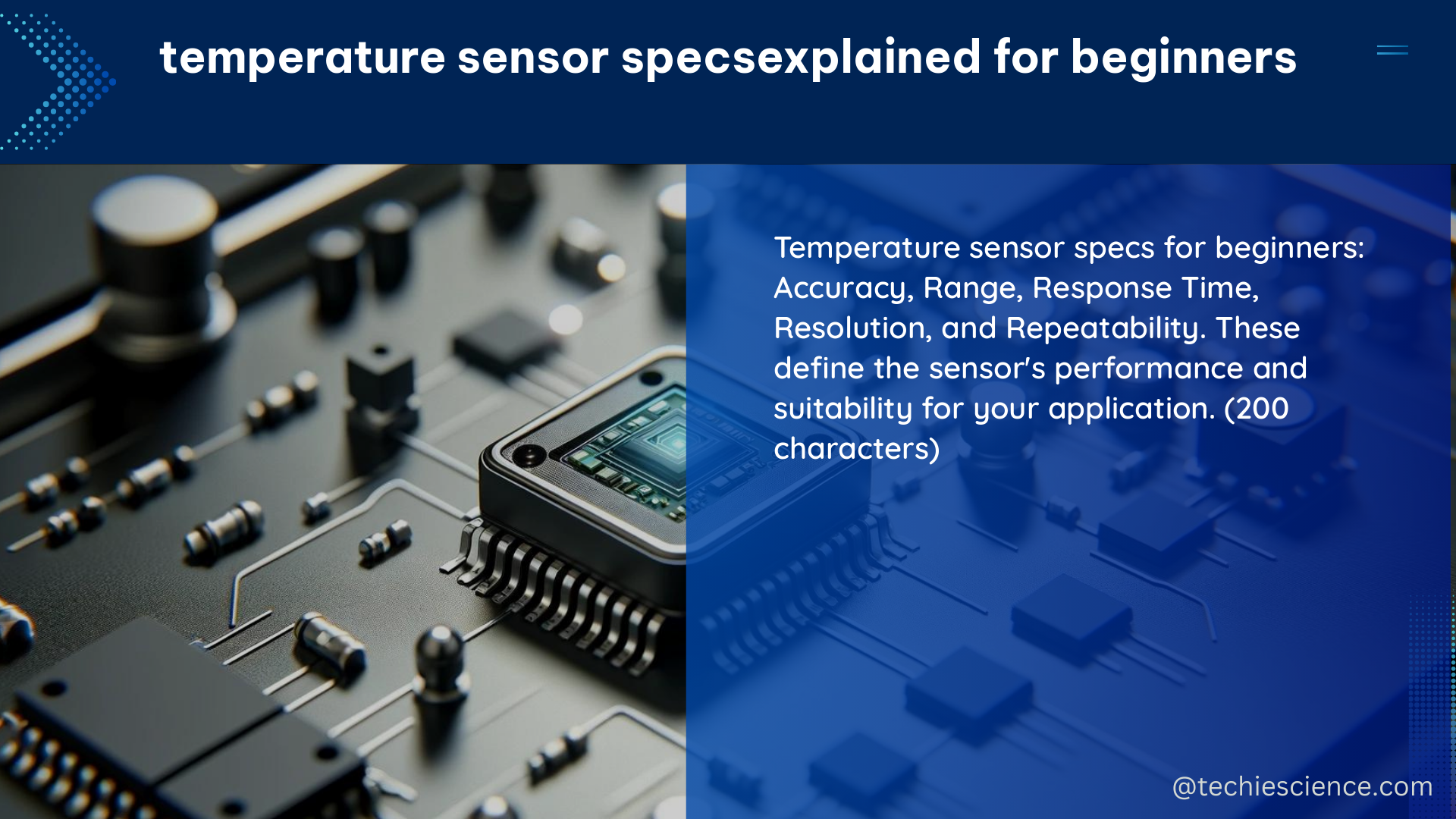Temperature sensors are crucial devices that measure the temperature of an object or environment, enabling system design, thermal analysis, and maintaining the correct ambient temperature for the proper functioning and longevity of electronic equipment. The three most common types of temperature sensors are thermocouples, resistance temperature detectors (RTDs), and thermistors, each with its own unique characteristics and applications.
Thermocouples: Versatile and Rugged
Thermocouples are made of two different metals joined together, generating a voltage proportional to the temperature difference between the junction of the metals and a reference junction. They are:
- Inexpensive: Thermocouples are one of the most cost-effective temperature sensor options, making them a popular choice for many applications.
- Rugged: Thermocouples are known for their durability and can withstand harsh environments, making them suitable for industrial and outdoor applications.
- Wide Temperature Range: Thermocouples can measure a broad range of temperatures, typically from -200°C to 1,800°C (-328°F to 3,272°F), depending on the specific type.
- Less Accurate: While thermocouples are versatile, they are not as accurate as RTDs or thermistors, with an accuracy typically ranging from ±1°C to ±4°C.
Resistance Temperature Detectors (RTDs): Precision and Accuracy

RTDs are temperature sensors that use a coil of fine wire, usually platinum, to measure temperature. They are:
- Highly Accurate: RTDs are known for their exceptional accuracy, with typical accuracies ranging from ±0.1°C to ±0.5°C.
- Wide Temperature Range: RTDs can measure a wide temperature range, typically from -200°C to 850°C (-328°F to 1,562°F).
- Require Current Source: Unlike thermocouples, RTDs require a current source to operate, which adds to the overall system complexity and cost.
- More Expensive: RTDs are generally more expensive than thermocouples, making them a less cost-effective option for some applications.
Thermistors: Sensitivity and Versatility
Thermistors are temperature sensors that use a semiconductor material to measure temperature. They are:
- Highly Accurate: Thermistors offer excellent accuracy, with typical accuracies ranging from ±0.1°C to ±0.5°C.
- Wide Temperature Range: Thermistors can measure a wide temperature range, typically from -100°C to 300°C (-148°F to 572°F).
- Sensitive: Thermistors are known for their high sensitivity, making them suitable for applications that require precise temperature measurements.
- Less Rugged: Compared to thermocouples and RTDs, thermistors are more susceptible to environmental factors, such as moisture and other contaminants, which can affect their performance.
Ambient Temperature Measurement Best Practices
When measuring ambient temperature, it is crucial to follow these best practices:
- Sensor Placement: Keep the sensor in the shade, at mid-height of the room, and in a well-ventilated space. Avoid direct sunlight, proximity to the ground, or placement above concrete, pavement, or stone.
- Monitoring Temperature Values: Monitor the temperature values over the course of a day to identify the maximum and minimum ambient temperatures.
- Historical Temperature Averages: Use historical temperature averages to help determine the outdoor environment’s ambient temperature.
Maintaining Correct Ambient Temperature
Maintaining the correct ambient temperature is essential for maximizing the life of devices and preventing malfunctions, especially in computing and data center environments:
- Safe Ambient Temperature Range: In general, a safe ambient temperature range for computer equipment is between 60°F (15°C) and 75°F (24°C), with the cooler end of the range being preferable.
- Cooling System Challenges: Higher ambient temperature readings or lower temperatures can make it difficult for a computer’s or data center’s cooling system to function effectively.
Data Center Temperature Control
In data centers, controlling airflow is the primary method for maintaining safe ambient temperatures:
- Hot and Cold Aisle Containment: This technique is used to control ambient temperature and other factors, such as humidity, by separating hot and cold air streams.
- Liquid Cooling: An alternative method used to maintain data center temperature, which can be more efficient than traditional air-based cooling systems.
- ASHRAE Standards: The American Society of Heating, Refrigerating and Air-Conditioning Engineers (ASHRAE) maintains a list of humidity and temperature level standards for data centers, which can help organizations ensure the longevity of their hardware.
By understanding the specifications and best practices for temperature sensors, as well as the importance of maintaining the correct ambient temperature, beginners can effectively monitor and control the temperature in their systems and environments, ensuring the optimal performance and longevity of their electronic equipment.
References:
- What is Ambient Temperature? – Definition from TechTarget.com
- Human Systems Integration (HSI) Practitioner’s Guide
- BIM handbook: A guide to building information modeling for owners, managers, designers, engineers, and contractors

The lambdageeks.com Core SME Team is a group of experienced subject matter experts from diverse scientific and technical fields including Physics, Chemistry, Technology,Electronics & Electrical Engineering, Automotive, Mechanical Engineering. Our team collaborates to create high-quality, well-researched articles on a wide range of science and technology topics for the lambdageeks.com website.
All Our Senior SME are having more than 7 Years of experience in the respective fields . They are either Working Industry Professionals or assocaited With different Universities. Refer Our Authors Page to get to know About our Core SMEs.